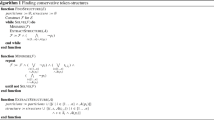Abstract
Token scanning, a new approach to the creation of protected information systems describing the state of the system with semantic content, namely, identification of uncontrollable context transitions, defined and possible on the whole set of variables using functional and nonprocedural programming languages, is described.
Similar content being viewed by others
References
Molyakov, A.S., KPROCESSOR-CID-table-factoring–a new control method for ensuring the reliability and protection of computer systems software, Bezop. Inf. Tekhnol.: VNIIPVTI, 2009, no. 4, pp. 125–129.
Molyakov, A.S., Research of hidden OS management tools on different platforms, Izv. Yuzhn. Fed. Univ., Ser. Tekh. Nauki, 2007, no. 1.
Molyakov, A.S., Zaborowski, V.S., and Lukashin, A.A., A model of hidden information security threats in a cloud computing environment, Probl. Inf. Bezop., Komp’yut. Sist., 2014, no. 2, pp. 41–46.
Author information
Authors and Affiliations
Corresponding author
Additional information
Original Russian Text © A.S. Molyakov, 2016, published in Problemy Informatsionnoi Bezopasnosti, Komp’yuternye Sistemy.
About this article
Cite this article
Molyakov, A.S. Token scanning as a new scientific approach in the creation of protected systems: A new generation OS MICROTEK. Aut. Control Comp. Sci. 50, 687–692 (2016). https://doi.org/10.3103/S0146411616080149
Received:
Published:
Issue Date:
DOI: https://doi.org/10.3103/S0146411616080149




